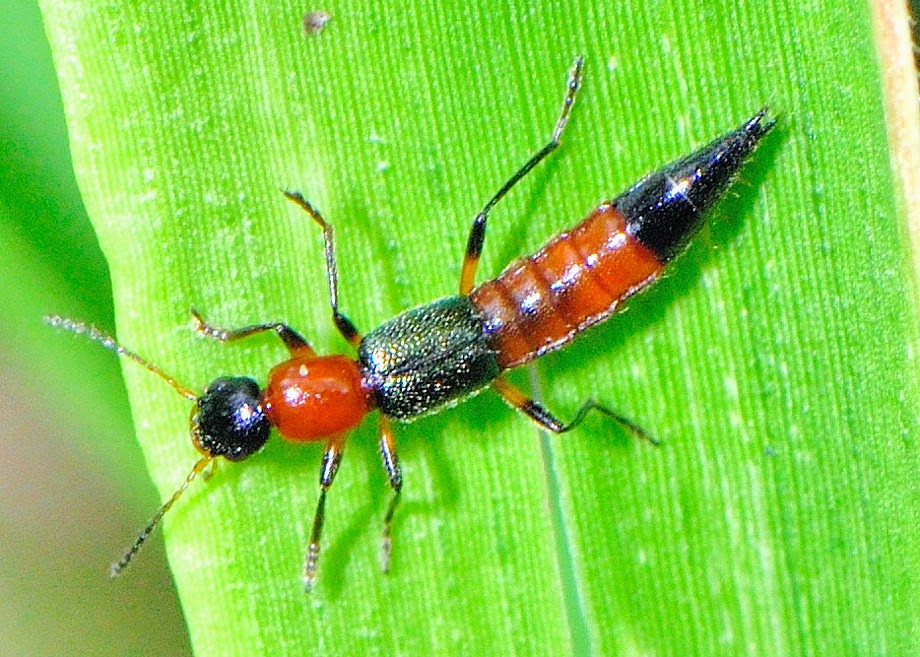Beetle banks create beneficial habitat for biological control agents important to pest management. Since the effect of predation from the bank is passive and seasonally variable it is a strategy best used as part of an overall system of pest management.
Large
expanses and widening fields for crop production have substantially
limited the access of beneficial insects to field crop prey. The ecological
services provided by naturally occurring pest predators is increasingly impeded
spatially as the fields grow. The field edges, being the over-wintering and refuge for beneficial
insects, are the primary source of conservation pest management in many crops.
As much as 35% of pest management and crop protection comes from naturally
occurring biological controls. Increasing the natural capital needed to enhance
the supportive habitat is a low investment and a high return strategy for
growers. 
This
technique is also important in the ecological design of food production
areas on homestead or in a production orchard. Many times we think of
beneficial habitat for the use of pollinators and flying insects. We
need to remember that there is a great diversity of beneficial insects
that need habitat. Beetles play an important role in controlling past
populations in our growing spaces.
Beetle Banks,
suggested by Southerton (1984) are grassy ridges within crop
fields, which by their position, decrease the travel distance of flying
or crawling
beneficial insects. Field edges of rough Tussock grass covered banks (Luff 1966) support a high
density population of Caribidae ( Large Ground Beetles) and Staphylinidae (Smaller Rove Beetles)
(Thomas 1991).
Reducing the distance from edge to edge increased the
frequency and duration of insects in the center areas of the fields. Especially
in Spring, as the insects migrate f urther into the field following aphid and
other pest populations.
Although Collins, et al (2002) refers to it
as decreasing field size, I believe the banks are an integral part of the field
itself and a permanent fixture within the cropping system. The control of
cereal aphids has been the motivation for many of the studies to be cited. Polyphagous arthropods are
important players in the natural biocontrol of wheat pests. Conservation
Biocontrols
are the " ..techniques to
encourage and conserve populations of naturally occurring (pest) predators..."
(Collins et al, 2003).
urther into the field following aphid and
other pest populations.
Although Collins, et al (2002) refers to it
as decreasing field size, I believe the banks are an integral part of the field
itself and a permanent fixture within the cropping system. The control of
cereal aphids has been the motivation for many of the studies to be cited. Polyphagous arthropods are
important players in the natural biocontrol of wheat pests. Conservation
Biocontrols
are the " ..techniques to
encourage and conserve populations of naturally occurring (pest) predators..."
(Collins et al, 2003).
According
to Collins et al. (2003), the most needed Integrated Crop Management (ICM)
component is natural biocontrol agents (BCA). The most important BCAs in Cereal aphid control are polyphagous (predators of multiple prey, not specific) arthropods. Since
expanded agricultural intensification has removed or degraded field boundary
areas, added habitat spaces are needed for increased polyphagous predator benefit.
More at SouthWoods
You must be logged in to comment.




urther into the field following aphid and
other pest populations.
Although Collins, et al (2002) refers to it
as decreasing field size, I believe the banks are an integral part of the field
itself and a permanent fixture within the cropping system. The control of
cereal aphids has been the motivation for many of the studies to be cited. Polyphagous arthropods are
important players in the natural biocontrol of wheat pests. Conservation
Biocontrols
are the " ..techniques to
encourage and conserve populations of naturally occurring (pest) predators..."
(Collins et al, 2003).











